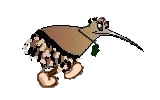Maori Healing and Herbal
The following remedies are extracts from Maori Healing and Herbal By Murdoch Riley.Please keep in Mind these are ANCIENT REMEDIES used by the Maori and these have been included here as a point of interest...some of these
methods would be considered obsalete in their methodology......but if you feel you would like to try some of these methods; It may be wise to consult your family Doctor before trying any of the following....or as with all herbal medicinal remedies for illnesses if the problem/s persists.
***PLEASE see your Doctor!***
The following are Ancient Remedies used by the Maori

THE SCHOOL OF PHARMACY
"Maori" Mythology, history, astronomy, pharmacy, manufacture, agriculture, fishing and hunting were each taught by seperate and various grades of Priests. A distinct and seperate college was occupied by the scholars or disciples of those who taught these seperate and to him distinct branches of knowledge....His mythology college was the supreme and head school where (those) of the first born males, of the direct line of those who claim their origin from the gods, were taught. His college of history was that in which the second sons of leading families, with also the men of the people who had distinguished themselves by deeds of valour, or intellectual power, were taught. All those who had gained sway over the people by oratorical power had a seat in the college. Witchcraft was a seperate power, and stood alone. The wizard and witch were of any grade or rank of the people. This art was not taught as a science but was divulged by those who knew it to any pet or favourite son or daughter. It was a secret of the gods and they alone divulged it to those of whom they took special cain. The power was an art or work, as the old Priests call it "it' a " (kitea?), which stands midway between this world and the world of spirits, and was divulged by the gods to the favoured one whilst such one was in a sound sleep or a state of coma. In each school or college the learners or scholars or disciples were placed sitting in a line up the centre of the wharekura college, from the door on the east, and the door on the west. The priests who rehearsedthe mythology sat in a similar line on the right side as they entered the college and looked to the south. The disciples sat facing these reciters. A similar line of Priests on the left devolved the responsibility of critising and correcting any error or interpretation made by the reciting priests to ensure the ancient mythology being handed down to the disciples (was recited) as it was received
from the gods."
"the school in which pharmacy was taught was that in which the sons of Priests alone commanded the respect and approval of the people. Such priests were the doctors of the tribes. The Myth of Creation is given the object and component parts of all created things, hence the Maori pharmacy was part of the sacred knowledge kept strictly, not only in the High Priest line of Priests, but also in the hands of those of the greatest intellectual power, of that with the administration of a decoction prepared from herbs, plants, roots and bulbs, with the use of splints, or poultices of bruised flax, kiekie or wharawhara, were repeated various incantations to ensure the aid of the gods. Such incantations were part of the karakia, ceremonies of worship, repeated and used only in the head college. Hence the great body of the people were debarred from possessing the power of self aid and depended solely on the Priest to cure all bodily ailments.
Each college had its presiding god, such god being represented by a toko, pole or stick....In the colleges of pharmacy and manufacture were kept the toko of Tane. This toko was straight with a bend half a circle midway between each end. This half circle represented the swelling in the growth of trees, herbs, and bulbs in the vegetable world....(The priest's) knowledge was of minerals and stones, trees, grasses and bulbs, and how used by him as medicines and representations of gods in various ceremonies"
ND White.
MS Papers 75,
Folder 97,
Alexander Turnbull Library,
NLNZ.
MEDICINES FOR ALL TYPES OF SICKNESS
(This summary of treatment for illnesses known to the old-time Maori is translated from a previously unpublished manuscript "Nga Rongoa Mo Nga Mate Katoa" and contains much fresh information. It is in John White's handwriting, but may well be the work of one of his Maori informants).
"The Tohunga are the people who treat all kinds of sickness, whether the patients are suffering from disease, battle wounds, accidental injury, from falling, or from sprains. The tohunga performs the appropriate ritual (karakia). There is a karakia for every type of sickness or injury. For an injury to the skin from a wooden lance the kakaho (culm of the toetoe, Cortaderia sp.) is obtained, put into water, heated over a fire until it is warmed, and then the hot liquid is applied to the affected part. At times the concoction is heated in a paua shell, or in a large periwinkle (pupu) shell and then the mixture is smeared over the wound, or the fibre of the wharawhara (Astelia spp). When the swabbing with warm water has been finished, the wound is pierced using a wooden knife made of the shrubs korokio (Corokia spp.) or koromiko (hebe spp.), or the ngaingai (Amphidesma australe), or the korokio (Paphies novaezealandiae) - types of mussel shells - or the pipi (Paphies australis) - a shellfish. After that the wound is bathed in cold water using kakapo feathers as a swab (kakapo - the parrot, Strigops habroptilus), or the feathers of the pukeko (the swamp hen. Porphyrio melanotus). or those those of the putakitaki (the paradise duck. Tadorna variegata). To assist healing. Seal fat or weka fat is heated in a paua shell and then smeared over the wound. Feathers are used to apply this fat. The process of smearing with fat heated until bubbling is followed by the application of cold water to the affected area and this is done repeatedly for some time. Then the wound is covered by the skin of the kakapo, the pukeko, the whio (the blue duck, Hymenolaimus malacorhynchos), or the paradise duck, with the feathers of those birds against the wound itself. After wrapping with the skins of the birds, everything is bandaged with flax. Next day the wound is inspected and if it is satisfactory the dressing is left on. If the wound is in a bad state the whole operation is carried out again and left for three nights and then dressed again. This is repeated often and usually held by assistants in case he moves, or wriggles too much."
BROKEN BONES,
"If a person has broken, fractured or chipped a bone, he is taken from the village to a place away from where people sleep. A sacred fire is lit and the tohunga performs a ritual. Stones are not allowed by this fire but the koromiko, the whau (possibly the cork tree, Entelea arborescens), and the karamu (Coprosma spp.) are broken off, taken to the water, wetted, and while the fire is burning well the wet branches are thrown over it. These are then covered with earth and a hole is left for the steam to rise out of. The arm or leg that is broken is placed over the steam so that the whole area of the wound is steamed. This is to sooth the flesh around the area of the break, and if this does not have the desired effect at the first steaming, then another is done and more fires have to be lit. When the wound is being steamed that is the time to re-set the bone so that everything is in place as before. When the bones are re-set the area is kept heated with flax. All this is closely observed by the tohunga. When the wound is healed the whole tribe feasts on the marae. When the patient has healed completely the tohunga is given a cloak."
THE TOES
"If a toe has been broken or crushed, and it looks extremely bad, make an incision at a joint. Use obsidian to make the cut, then stop the bleeding by using ashes of burnt flax stalks and also tying a tournaquet above the part which was cut."
BURNT SKIN
"If a person has burnt himself by falling into a fire or burnt a part of his anatomy, pour cold water over the area or have the person lie down in cold water."
SPRAINED (displaced) JOINTS
"If a joint is displaced or dislocated, pull it till is is back in place and place the joint in a splint similar to that used for broken bones. The splints are made according to the extent of the injury."
STITCHING CUTS
"If the cut is very bad, make a thread of muka (flax thread) using a sharpened stick to sew the wound. Sew the wound lightly and bind it so that the blood does not escape. Use the ash of the flax stalk as dressing. When the wound has healed a feast is held on the marae."
SPLINTERS OF THE FLESH
"If a spear breaks inside a person's flesh, the wound is cut around till the piece is exposed, so that the wood or shell can be seen. The end is bitten and pulled out by the teeth. The tohunga then performs a ritual."
CONSTIPATION
"If you have not been able to defaccate for a while, use flax roots mixed with water. Crush the flax roots and heat the juice in a paua or pupu shell (pupu is a general name for winkles). The patient then drinks a portion. Part of the potion is applied to the person's anus, a stalk of kakaho (toetoe) is then filled with the flax potion. The end of the stalk is pushed up the person's anus, and the other end is blown so that the potion spurts into the rectum. It wont be long before the person defaecates, and all is well!" BURNS "Burns are treated by using cold water. The patient is taken and lain in the water, a chant is said, and after the pain has eased the area is smeared with kokowai (red ochre and oil mixture) and covered with the skin of a bird with the feathers still in, in addition to flax ashes and the shes of tutae kuri (Elymus multiflorus) grass." TOOTHACHE "The remedy for toothache is to roast the kakaho or toetoe over a fire and then chew with the affected tooth, until the toothache is cured."
SORE STOMACH "Boil ngaio (Myoporum laetum), mamaku (Cyathea medullaris), piupiu (Pneumatopteris pennigera), and kawakawa (Macropiper excelsum) in a kohua (vessel for boiling with heated stones) and drink the juice. Make an earth oven similar to that used for treating people with broken bones, making it the same length as the patient, who then lies on it. He is then covered with earth so that the steam surrounds him. This done again till the patient is well."
SORE BACK
"If the back is sore from lifting or is simply giving pain, the patient goes to the water (river) and sits, whereby he is massaged by the tohunga using his hands. The patient then returns to stand beside the fire, with his back to the fire. He then returns to the tohunga who again massages the painful area. The patient then returns to the fireside to bask in the heat, the whole process being repeated two, three, or four times, and then the painful area is strapped with a woven flax belt and left like that till the back is healed."
(C)Copyright 1994 Mudoch Riley
more to come as time permits.
....to Maori
....MAORI MYTH AND LEGEND
....MAORI LINKS


